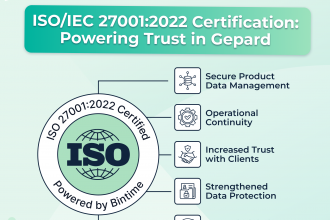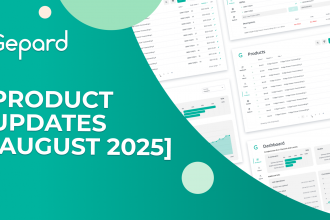What Is Customer Behavior?
Customer behavior refers to the actions, decisions, and patterns exhibited by individuals or groups when interacting with products, services, or brands. It encompasses the various ways in which customers engage, evaluate, purchase, use, and provide feedback on offerings.
Consumer Behavior Models
Consumer behavior models are frameworks that help with explaining and predicting customer behavior of individuals or groups when purchasing goods or services. Two commonly used consumer behavior models are the Economic Model and the Cognitive Model.
The Economic Model, also known as the rational model, assumes that consumers are rational decision-makers who carefully weigh the costs and benefits of different options before making a purchase. It suggests that consumers aim to maximize utility or satisfaction and make choices based on factors such as price, quality, and availability. The Economic Model emphasizes factors like price elasticity, income levels, and consumer preferences to understand purchasing decisions.
On the other hand, the Cognitive Model focuses on the cognitive processes and psychological factors that influence customer buying behavior. It considers that consumers are influenced by their perceptions, beliefs, attitudes, and motivations. This model recognizes that consumers may not always be entirely rational and can be influenced by factors like emotions, social influences, and previous experiences. The
The Cognitive Model includes concepts like perception, learning, attitude formation, and decision-making processes to explain consumer behavior.
Both of these models provide valuable insights into consumer behavior, but it’s important to note that individual consumers can exhibit complex and varied decision-making processes. Therefore, marketers often consider a combination of economic and cognitive factors, along with other relevant models and theories, to gain a comprehensive understanding of consumer behavior and develop effective marketing strategies.
Factors Influencing Consumer Behavior
Consumer behavior is influenced by various factors that shape individuals’ purchasing decisions. These factors can be categorized into four main groups: cultural, social, personal, and psychological factors.
Cultural factors include cultural values, beliefs, customs, and norms that are instilled in individuals by their society. Culture influences consumer behavior by shaping preferences, perceptions, and consumption patterns. Social factors encompass the impact of social groups, such as family, friends, reference groups, and social class. These groups can influence consumer behavior through word-of-mouth, opinions, social norms, and the need for conformity.
Personal factors encompass individual characteristics such as age, gender, occupation, lifestyle, and personality. These factors play a significant role in determining consumer preferences and decision-making processes. Lastly, psychological factors include perception, motivation, learning, attitudes, and beliefs. Consumers’ perceptions of products, their motivation to fulfill certain needs, and their attitudes toward brands and advertisements greatly influence their purchasing behavior.
How to Use Customer Behavior Insights
Utilizing customer behavior insights effectively can significantly impact your marketing strategies and overall business success. Here are some key ways to leverage customer behavior insights:
- Personalize marketing campaigns. Utilize customer behavior insights to segment your audience and deliver personalized marketing messages. By understanding their preferences, purchasing patterns, and interests, you can tailor your campaigns to resonate with individual customers, increasing engagement and conversion rates.
- Optimize customer journey. Learn how to analyze customer behavior data to identify pain points, bottlenecks, or areas of improvement within the customer journey. Use this information to optimize the user experience, streamline the purchasing process, and enhance customer satisfaction and loyalty.
- Develop targeted product offerings. Identify trends and patterns in customer behavior data to understand their needs, preferences, and demands. This knowledge can guide the development of new products or the enhancement of existing ones, ensuring they align with customer expectations and market trends.
- Enhance customer retention strategies. Customer behavior insights can help identify loyal customers, high-value segments, or customers at risk of churning. Tailor retention strategies and loyalty programs that are based on their behavior patterns, offer personalized incentives, rewards, or exclusive offers to foster customer loyalty and increase retention rates.
- Refine pricing and promotional strategies. Analyze customer behavior data to determine price sensitivity, demand elasticity, and the effectiveness of promotional campaigns. Adjust pricing, discounts, or promotional tactics based on customer response to optimize revenue generation and profitability.
- Improve customer service and support. Gain insights into customer behavior to understand their preferences for communication channels, response times, or support requirements. Use this information to enhance your customer service and support efforts, delivering a seamless and personalized experience that meets their expectations.
- Forecast and plan future demand. By analyzing historical customer behavior data, you can identify seasonal trends, demand patterns, or cyclical behaviors. Utilize this information to forecast future demand, plan inventory, and allocate resources more effectively.
How To Segment Consumer Behavior
Segmenting consumer behavior involves dividing a target market into distinct groups based on shared characteristics or behavior patterns. To segment consumer behavior effectively, start by identifying relevant segmentation variables such as demographics, psychographics, behavioral patterns, or geographic location. These variables should align with your marketing objectives and help differentiate your target audience.
Once you have identified the variables, collect and analyze data through surveys, customer feedback, purchase history, website analytics, or market research. Look for patterns and similarities among consumers that indicate distinct segments. This can be achieved by utilizing statistical techniques like cluster analysis or data mining. By segmenting consumer behavior, you can tailor your marketing strategies, messaging, and product offerings to each segment’s unique needs, preferences, and behaviors, leading to more targeted and effective campaigns.

